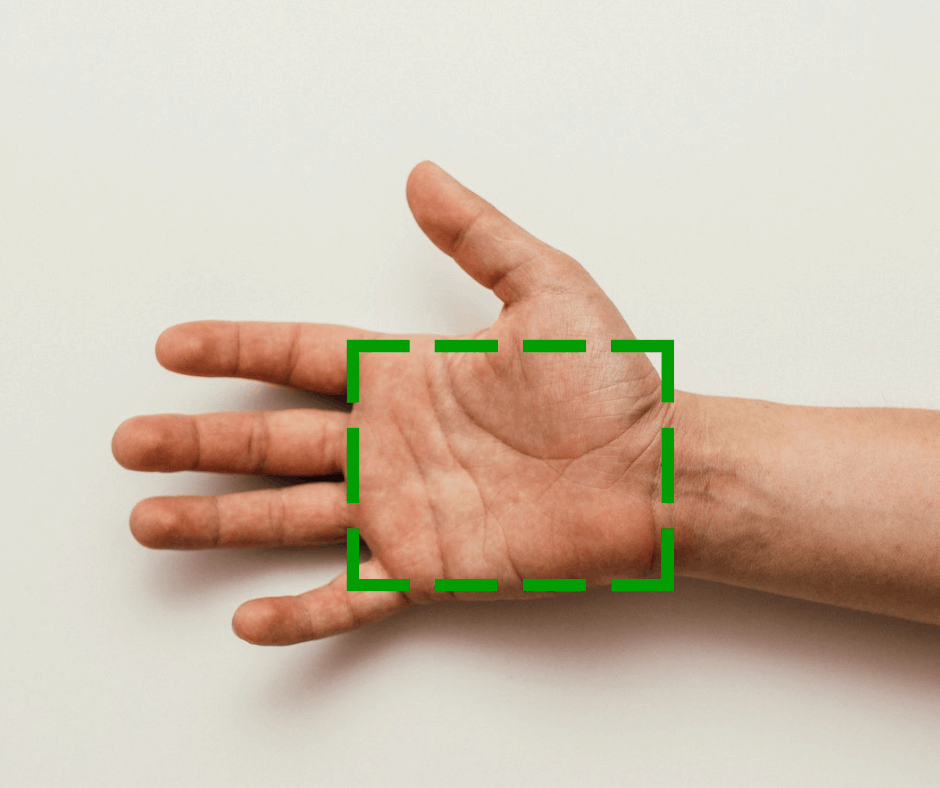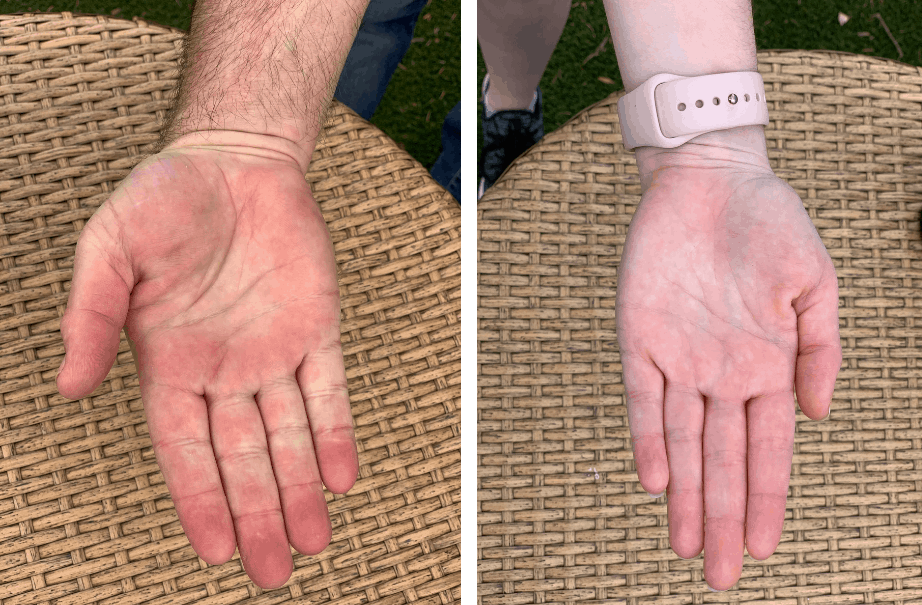How To Get Started with Hand Portion Sizes
Portion awareness
Have you ever said or thought any of these things?
Does this serving equal a portion size? How many calories are in it?
I need a scale so that I can weigh and measure out all of my food.
I spend at least half an hour a day writing down everything I eat...
What does a gram even look like anyway?
Already know you want to get started with this "handy" strategy to know what portions are best for you?
If so, click here to get your simple one page guide with details of hand portion sizes for a full range of foods, perfect for posting on your fridge.
The benefits of portion awareness
Knowing what portion size is right for you is as important as what you eat... maybe even more important. Size matters.
We are a society that has become accustomed to adding a double X to our portion size. The amount of food you put on your plate is often more than you realize, so if managing your weight or maintaining a balanced diet is important to you, try your hand at using visual cues. It will be much easier to choose portions that fit your goals.
- Serving size = A standard amount of one particular food, used for nutrition labels and recipes
- Portion size = The amount you actually eat
It is all too easy to plate a portion that is different than what a label says is a serving size
For example, a serving of peanut butter is 2 tablespoons, yet the amount of peanut butter you place on your morning toast is your portion, which may or may not equal the 2 tablespoon serving size. And when that happens, you could be eating a substantially different amount of calories and nutrients than listed on the label.
We are constantly bombarded with "expert" advice that keeps changing every few years
With terms like macronutrients, phytochemicals, and even calories, it's enough to make your head spin. Do you have to be a PhD in biochemistry to eat healthy?
You don't need to know any of that, because no one is more of an expert on your life than you are.
It's about finding the portion sizes that provide the amount of energy you need and the variety of nutrients that's right for you.
Being aware of the best portion size for you can be simple. Your own hands can serve as a good reference to determine a suitable amount, so you can just eat... and still be able to reach your goals.
The hard way
There are numerous ways to monitor the food you eat. What are you doing now to assess your portion sizes?
Umm… nothing?
These days, the most common ways for people to determine their serving size is
"Whatever is in the package."
and
"However much is served to me."
As you may imagine (or have experienced), this is not the most effective way to maintain a balanced and healthy nutritional intake.
Calorie counting or tracking macros
If you like to count, and prefer the certainty of measuring, then planning and tracking macros might work for you (at least for a short time).
There certainly are some drawbacks, not the least of which is it can be tedious, and it also miiiiight not be as accurate as you like to think it is.
What would it look like if it were easy?
Logging your food can be time consuming, but it doesn't have to be. If you hate measuring and prefer to eyeball, or just want a method that is more intuitive, there certainly are other options. Hand size portions might strike the perfect balance.
This strategy is hands down the easiest to use, and will have you reaching your nutrition goals without meticulously counting calories, point counting, macro tracking, or needing to weigh and measure every bite.
It can be used with any food, anytime, at home or dining out, to ensure you are getting a balanced meal.
Hand size portions
What part of your hand demonstrates portion size? Here's how it works.
At Balanced Healthstyles, we have simplified how to use your hand into 4 basic parts. You will be using:
- your palm
- a closed fist
- a cupped hand
- your thumb
How To Use Hand Size Portions
Here’s how it works. We'll break it down one food group at a time.

Use your palm to measure your portion of protein
- For example: lean meat, beans, greek yogurt

Use your fist to measure a portion of vegetable
- For example: cucumbers, tomatoes, broccoli

Use your cupped hand to measure a portion of carbohydrates
- For example: starchy vegetables, grains, fruit

The size of your thumb is used to estimate a portion of healthy fat
- For example: avocado, peanut butter, nuts, olives
The cool thing about using your hands for portion awareness is that your own hand is the perfect size for what portions your body needs
Each one of us has a slightly different hand size, and using hands for portion awareness fits your own unique needs in all the right ways.
Your amount of food your hand represents is the volume, length, width, and thickness of the palm of your hand and your thumb, the overall volume of your fist, and what would fit into your cupped hand. You can use these visual cues to estimate your just right portion sizes. The easiest way to know what portion is right for you is always by your side.
Your amount of food your hand represents is the volume, length, width, and thickness of the palm of your hand and your thumb, the overall volume of your fist, and what would fit into your cupped hand. You can use these visual cues to estimate your just right portion sizes. The easiest way to know what portion is right for you is always by your side.
How does this work for you?
We hear you asking loud and clear,
OK great how many of these portions do I need?
The answer? It totally depends.
Generally, a woman would need (3-4 times a day)
- Protein = 1 palm
- Vegetables = 1 fist
- Carbohydrates = 1 cupped hand
- Healthy fat = 1 thumb
Generally, a man would need (3-4 times a day)
- Protein = 2 palms
- Vegetables = 2 fists
- Carbohydrates = 2 cupped hands
- Healthy fat = 2 thumbs
Ideally from whole minimally processed foods.

Keep in mind, we have generalized portion sizes when offering the above suggestions. Balanced Healthstyles is not saying that's all the food you get. It will depend on many factors including your goals and lifestyle.
Using your hand size is simply a shortcut to estimate portions that fit your unique body size and needs. It's about teaching you how to eyeball your portions to make sure you're eating well-balanced meals.
It will take some practice to become comfortable using your hand to guide your portion size, especially when these food groups are combined into recipes. The more you practice, the more you will trust this method!
What to do next
Using your hands to estimate food portion size isn't an exact science. It's not meant to be perfect.
Hand size portions will make it easy and get you the results you want without a lot of hassle.
Learn more about food groups that work well with hand portioning and a balanced diet in our Healthy Foods Grocery List.
Looking for delicious healthy recipes with hand portion estimates included? You will love our collection of recipes.
Heather Lynn Darby helps office and tech professionals disrupt the cycle of chronic stress that undermines their health, and to recover from the negative effects of sitting at a computer all day. Find other articles written by Heather on her coach profile.
If you are largely sedentary at work and rely on your intellectual acumen for success, her take on body-mind interventions will help you find a balance between being "in the zone" and getting the amount of movement that will optimize your mental productivity and prevent health problems.






I have found that using hand portions gives me freedom.
For example, there was a time I was consumed with getting all my macros right. I would spend hours a week perfecting my eating plan – until one day, I couldn’t do it anymore – I couldn’t spend any more time getting the numbers right. Living my life was more important than spending so much time tracking everything Ugh! the thought still stresses me out.
I can never get the time back, and I think of it as a learning experience. One that taught me a lot, especially how I can’t live like that forever. It was too much!!!!!!
Hand portions let me eyeball. And when I use a chart to mark off my given hand portions for the day, I do well and spend very little time doing it.